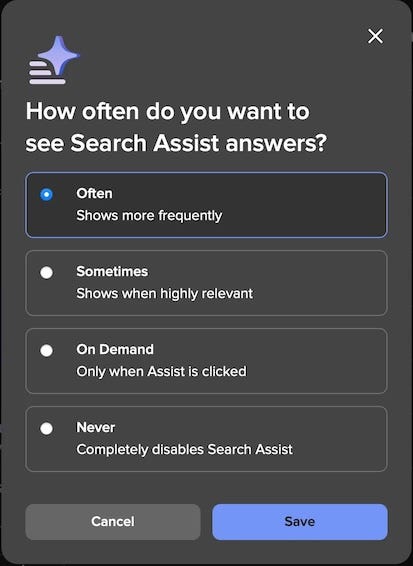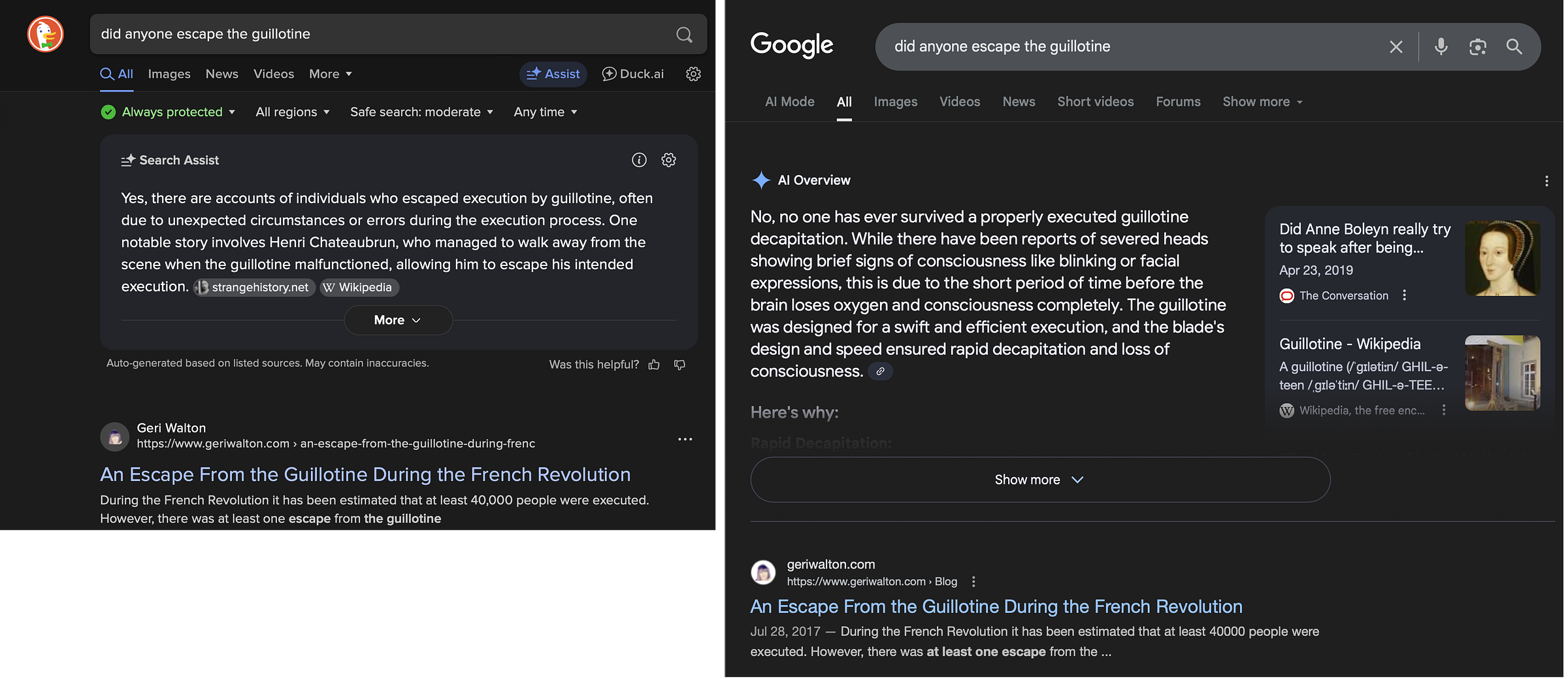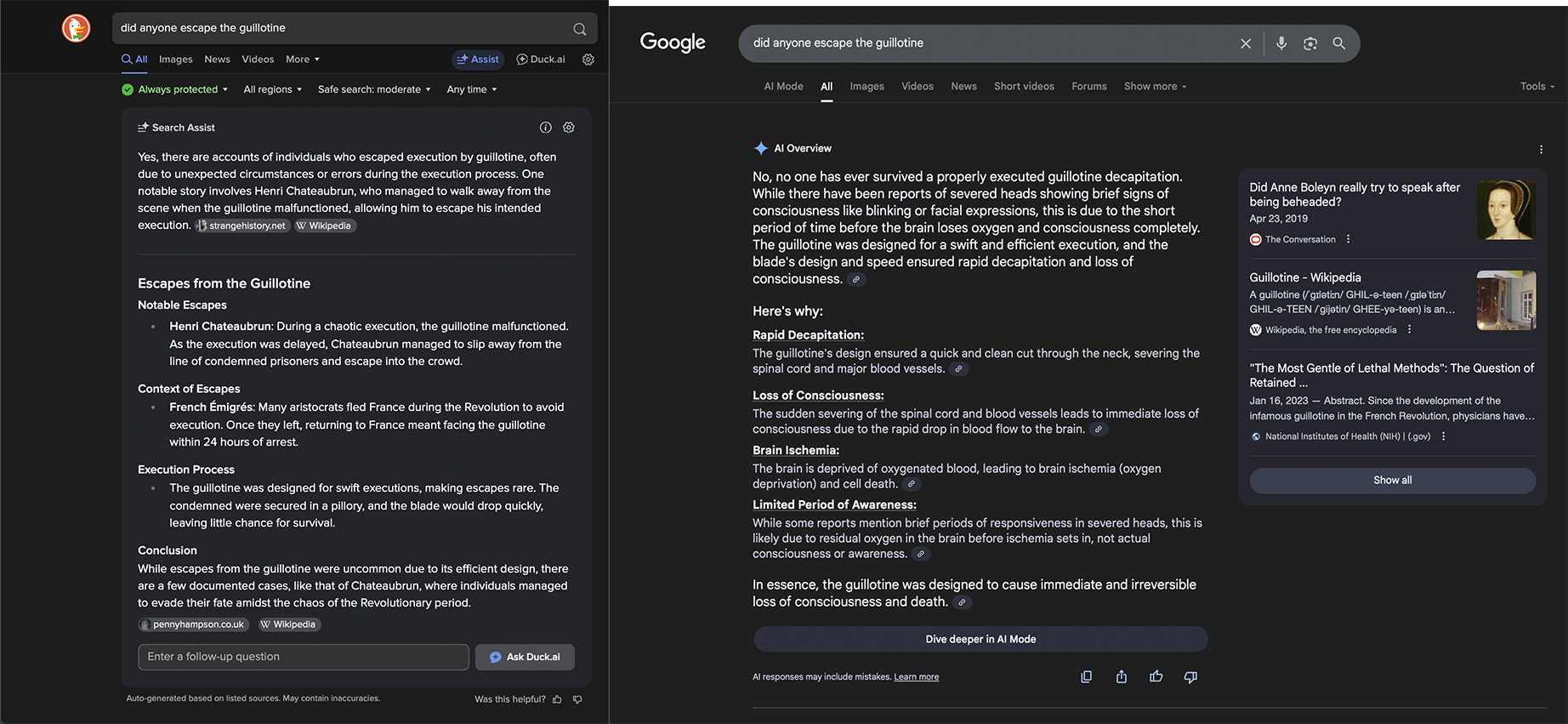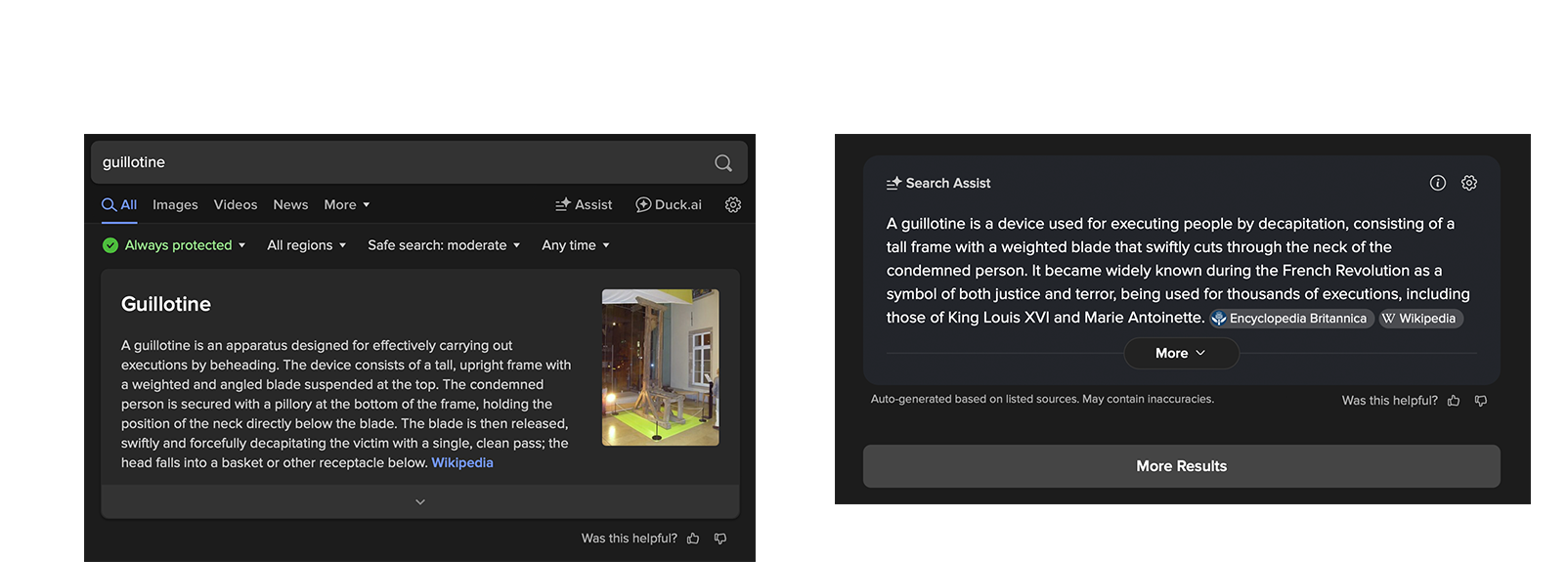9 ways DuckDuckGo's Search Assist Differs from Google’s AI Overviews
Seeking better UX for AI-assisted search answers at DuckDuckGo
At DuckDuckGo, our approach to AI is to only make AI features that are useful, private, and optional. If you don’t want AI, that’s cool with us. We have settings to turn off all of our AI features, and even a new setting to help you avoid AI-generated images in our search results.
At the same time, we know a lot of people do want to use AI if it is actually useful and private (myself included). Our private chat service at duck.ai has the highest satisfaction ratings we’ve seen in a new feature, and Search Assist, our equivalent of Google’s AI Overviews, is currently our highest-rated search feature.
Our goal with Search Assist is to improve search results, not to push AI. We’ve been continually evolving it in response to feedback, seeking better UX, and here’s how we’re thinking about that UX right now, relative to Google’s AI Overviews:
You can turn Search Assist off or turn it up—your preference.
When it does show, Search Assist keeps vertical space to a minimum so you can still easily get to other search results.
The initial Search Assist summary is intentionally short, usually two brief sentences. This brevity keeps hallucinations to a minimum since less text means less surface area to make things up. You also get the complete thought without having to click anything. However, you can still click for a fuller explanation. This is a subtle but important distinction: clicking more on Google is getting more of the same, longer summary; clicking more on DuckDuckGo is getting a new, completely independent generation.
You can use the Assist button to either generate an answer on demand if one isn’t showing automatically, or collapse an answer that is showing to zero vertical space.
When we don’t think a Search Assist answer is better than the other results, we don’t show it on top. Instead, we’ll show it in the middle, on the bottom, or not at all. This flexibility enables a more fine-tuned UX.
All source links are always visible, not hidden behind any clicks or separated from the answer. We’ve also been keeping sources to a minimum (usually two) to both increase answer quality (since LLMs can get confused with a lot of overlapping information) and increase source engagement.
Our thumbs up/down is also visible by default, not hidden behind a click. This anonymous feedback is extremely valuable to us as a primary signal to help us find ways to improve.
To generate these answers, we have a separate search crawling bot for Search Assist answers called DuckAssistBot that respects robots.txt headers. By separating DuckAssistBot from our normal DuckDuckBot, and unlike Google, we allow publishers to opt-out of just our Search Assist feature.
Like all of our search results, Search Assist is anonymous. We crawl sites and generate answers on your behalf, not exposing your personal information in the process or storing it ourselves.
I’m sure our Search Assist UX will evolve further from here as we’re actively working on it every day. For example, we’re working now on making it easier to enter a follow-up question in-line, which allows you to more easily stay in context when entering your question.
That is to say, the above is not set in stone and the answers for these queries will surely change over time, but I hope this post helps illustrate how we’re approaching Search Assist to be consistent with our overall approach to AI to be useful, private, and optional. Feedback is welcomed!








